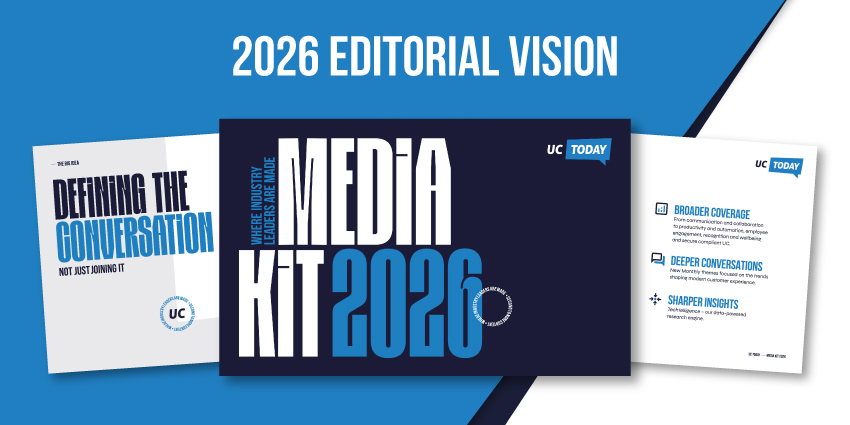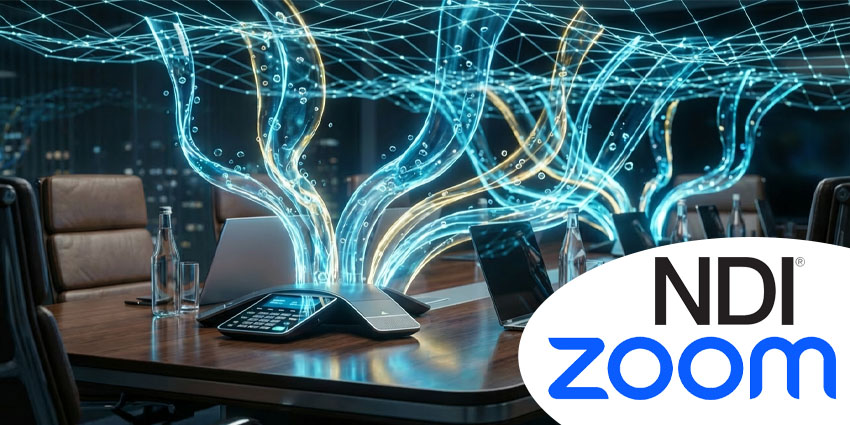Any UCaaS provider with a partner exclusively dedicated to building hardware for its platform can count itself very lucky.
Zoom is one such provider. Since its launch in 2019, Neat has released a handful of thoughtful, well-crafted products designed as vehicles for Zoom’s meeting and phone solutions.
The two businesses work together so harmoniously that you’d be forgiven for thinking that they are one company – which is understandable, given the huge role that Zoom played in Neat’s founding.
“I first spoke to Oded about what would go on to become Neat in October 2018,” says Neat Founder and CEO, Simen Teigre.
Oded Gal is chief product officer at Zoom and plays a pivotal role in making Zoom’s ambitions a reality.
“Our ideas aligned very well with the challenges that Zoom saw and the vision that Zoom had,” Teigre continued.
“It’s one thing to provide great products with great features and ease of use, but we wanted to go beyond that and bring more aspects to the meeting room than just video communication”
Neat’s offering is designed to support the Zoom meeting space, initially focused around Zoom Rooms, with personal devices on the way amid the move to hybrid working.
The first product was Neat Bar – a sleek meeting room device that provides high-quality audio and video, and typically sits on or below a monitor.

Then came Neat Board – a complete meeting package that provides the qualities of Neat Bar with a top-end screen, supporting functions like digital whiteboard for collaboration.
Then there is Neat Pad – a tablet-sized device that can act as a scheduling display outside of a room, for tasks like booking, or inside the room to control the Zoom meeting.
All of the products are designed to solely run Zoom software, making the user experience as seamless as possible.
“It’s a challenge if you’re just taking commodity hardware,” Jeff Smith, Head of Zoom Rooms, said.
“When you have a team that is as thoughtful and capable as the Neat team – that is listening to where we want to go, rather than generically producing for multiple services – it makes a huge difference.
“I love the portfolio and we’ve been collaborating on the concepts and the use cases that are in high demand. The Neat team is all over it.”
The products mentioned above are the staples of the Neat portfolio, but there are more on the way.
Teigre said that customer demand for use cases beyond the stereotypical meeting room are expanding at both ends of the spectrum –larger rooms in offices, and home working environments.
To cater for this need, Neat last year announced three new products: Neat Bar Pro, designed for larger meeting spaces; Neat Frame, which is a stylish personal device for the home office; and Neat One, which is a turbo-charged, “first-of-its-kind” webcam that packs in a camera, microphone and speaker.

But it is perhaps Neat Sense that has the Zoom and Neat teams most excited.
Neat Sense is the overarching name for a collection of advanced sensors in all Neat devices that feed analytics into the Zoom portal – data such as air quality; the number of people in the room; humidity; and the presence of volatile organic compounds.
Neat Sense feels particularly poignant at this moment in time, with the flow of bacteria in the air never under such scrutiny, but Neat has actually been developing this functionality since that first conversation between Teigre and Zoom’s Oded Gal.
Teigre said the idea is to bleed every drop of productivity out of the Neat devices.
“Every component in a Neat product that can be used to report data, should be used report data if the customer wants that, so we give them the flexibility and control to enable the Neat device to monitor and collect what they want to see,” he said.
“You have a camera that shows the image, but that can be used as a sensor to identify and count people, or detect when people have entered the room.
“Microphones pick up our voices, but you can use them to detect sound and noise levels.
“There’s an ambient light sensor; usually you’d only use that to adjust the exposure of the camera but it can also be used to detect whether the light is on in the room, and if so what colour is the light – which can be important to people’s wellbeing.”
Appetite for Neat Sense has rocketed during the pandemic, as one might expect, but demand was certainly there beforehand as working patterns became more flexible – albeit at a slower rate.
The relevance of Neat Sense will also extend beyond the pandemic as businesses take their first shot at preparing for the hybrid world, and then use analytics to see what works and what doesn’t.
“This is going to help companies understand space utilisation,” Zoom’s Smith said. “Is this large conference room effective or do I need two small rooms instead?
“The IT and facilities teams have never had the data to have those kinds of conversations.
“With Neat Sense we can add all of the data together around how often the room is used, how many people are typically in there, what technology is used”
“So, I think, with the pandemic we’ve maybe had to pivot a little bit, but there haven’t been any revelations in terms of what people need to make these decisions.”







